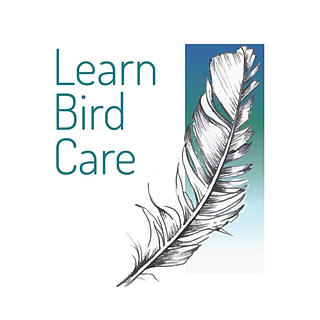Types of Window Strike Injuries in Wild Birds
- Learn Bird Care
- Jul 9, 2021
- 3 min read
Updated: Aug 9, 2021
Window strike is one of the most common collision injuries of birds. You may hear that sickening “thunk” against the window and then find a poor bird on the ground. It might be panting and conscious, looking stunned, or be injured significantly. Some are even killed outright. Below are some of the most common injuries found when treating different birds injured through window strikes, so you can be aware of the best steps to help these birds.
Photos Courtesy of Wild Bird Care Charitable Trust
Head impact injuries
Songbirds, for example, will often strike the window mid-flight, headfirst! If this happens, skull injuries and brain trauma are possible. If the blow was mild, the bird might be able to recover relatively quickly, having been only “stunned”, but be aware that if the bird does not recover that a more severe injury is likely. It could include skull fractures, brain bruising or bleeding or, rarely, spinal injuries. If the bird is still alive after an impact, it may show signs of neurological disease. Incoordination, vocalisation, or paralysis are signs of this. Some birds may not be responsive even though breathing and seemingly aware, whilst others may be unconscious. If possible, any of these birds should be taken immediately for vet treatment or to an experienced rehabilitator to assess and stabilise the bird.

Photo Courtesy of Wild Bird Care Charitable Trust
Chest impact injuries
Some species, such as pigeons and doves, may see their mistake at the last moment and attempt to adjust to prevent a collision. Often these birds will pull up and hit the window with their chest. The wings may also hit at this time. Although wing fractures are possible, the chest most often sustains the brunt of the impact. Chest injuries could include bruising of the sternum, fractured sternum or coracoid fractures. The Coracoid bone is a stabilising bone of the shoulder which is frequently broken in some species (e.g. the New Zealand kereru). These birds may have no outer injuries apparent but are unable to fly. As such, you may see them on the ground near a window hours to days later, and they will not be able to fly off when approached. Diagnosis of sternum or coracoid fractures requires an x-ray for diagnosis.

Photo Courtesy of Wild Bird Care Charitable Trust
It’s also important to realise that there may be internal injuries such as bleeding, organ damage or bruising - even the heart can sustain impact injuries in some species such as kereru (Cousins et al., 2012). Surprisingly, many chest and coracoid injuries can fully resolve with time, with pain relief and cage rest if they have survived the initial trauma.
What you can do:
Keep injured or stunned birds safe from predators in a box with a towel lining the bottom and leave within a quiet, warm and dark location. If the injury is mild, they may recover within approximately half an hour and be released if flying well.
If the bird does not recover or has significant injuries, or you are not sure, then take for further assessment by a vet or rehabilitator experienced with birds.
Remember that some injuries are not a death sentence, so it can be best to give them a chance to recover within a rehabilitation setting.
References
Cousins, R. A., Battley, P. F., Gartrell, B. D., & Powlesland, R. G. (2012). Impact injuries and probability of survival in a large semiurban endemic pigeon in New Zealand, Hemiphaga novaeseelandiae. Journal of Wildlife Diseases, 48(3), 567-574.
Written by Janelle Ward
Wildlife Veterinarian & Co-founder of Learn Bird Care Ltd.
Would you like to learn more about rescue, first aid and initial care? Wild Bird Rescue 101 covers all these areas so you have the tools and knowledge to help birds in need.
Would you like to know how to rescue and raise baby birds up to the point of release? Then Baby Bird Rescue & Care is the course for you!
To stay in touch and find out about new blog posts and courses as they are released, register for our free newsletter today and you will also receive our ' Basic Bird Rescue and Initial Care' booklet!










Their alluring eyes, gentle smiles, and romantic touch make every moment yours to be intimate. Manali Call Girl Service Offer them one night, and you will be looking forward to coming to Manali time and time again.
Nel fantastico universo delle slot di Domusbet Casino, ogni giocatore scopre mondi incredibili e opportunità di vincita straordinarie. La nostra collezione comprende oltre seicento titoli che spaziano dalle avventure nell'antico Egitto alle esplorazioni https://domusbet-it.com/ galattiche futuristiche, dalle leggende mitologiche agli universi fantasy più affascinanti. Ogni slot offre meccaniche innovative come simboli cascata, giri gratuiti con moltiplicatori crescenti, funzioni bonus interattive e sistemi megaways che possono generare migliaia di combinazioni vincenti.
It is painful for both humans and birds. We paid over $500 to replace the windows last month! bird keeps flying into window spiritual meaning